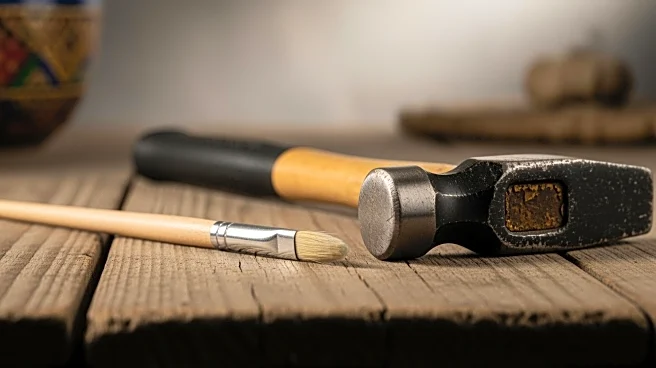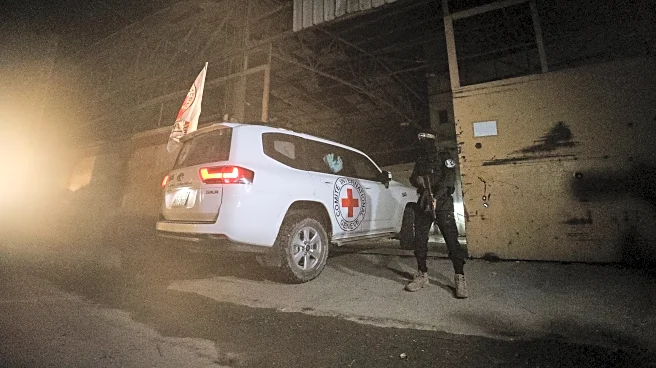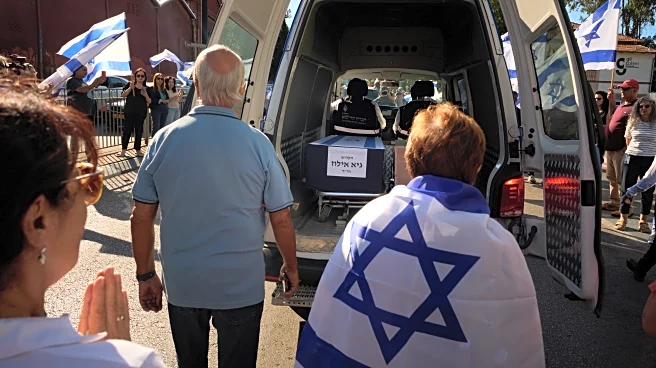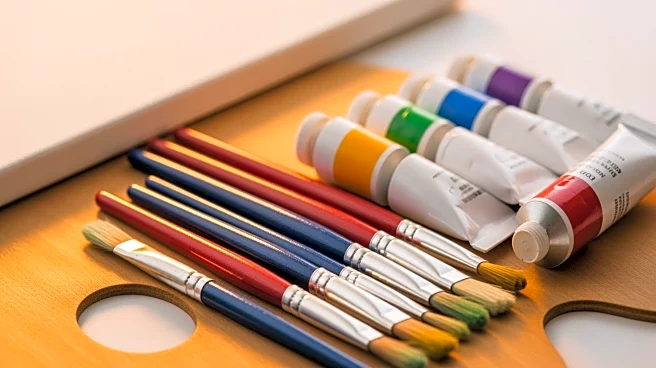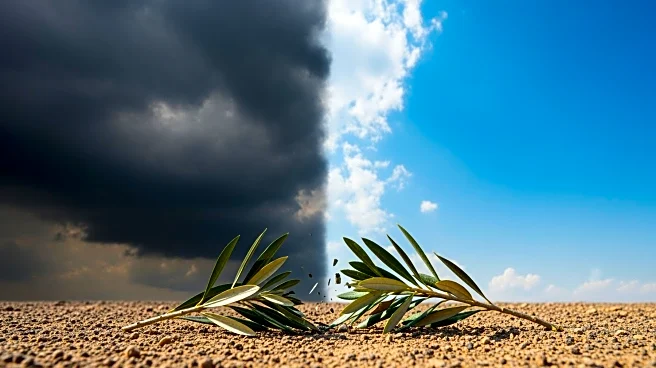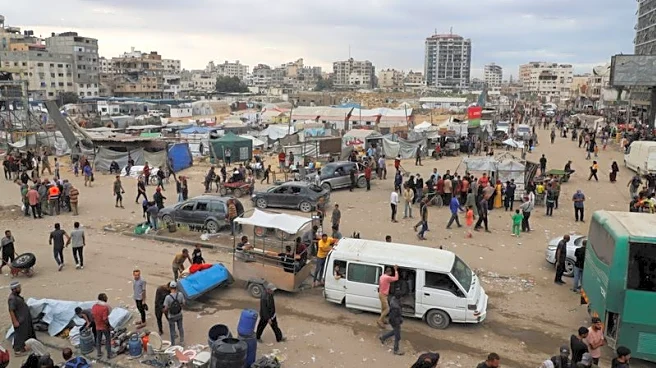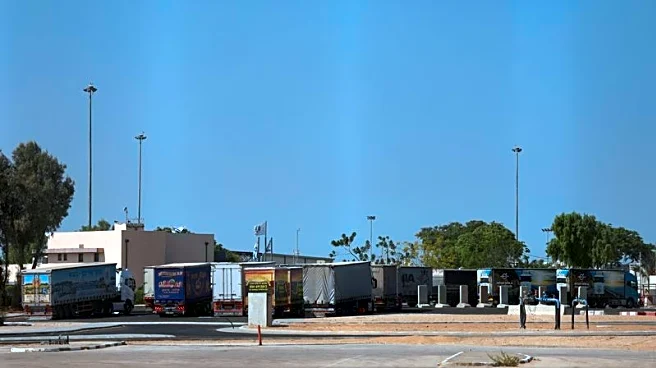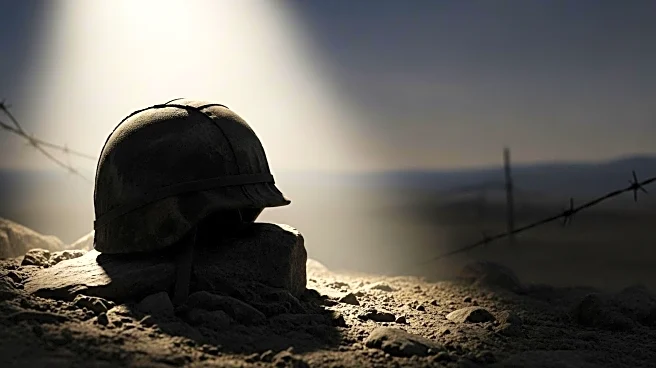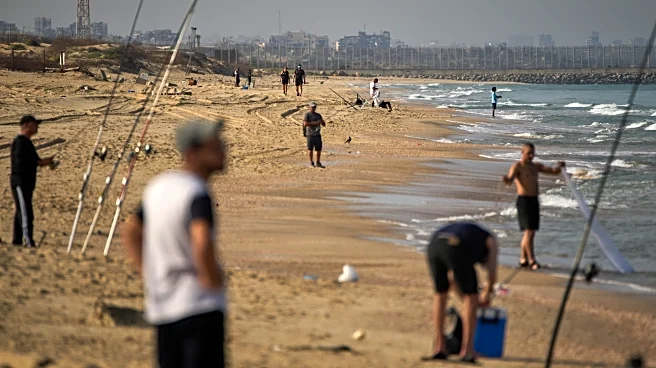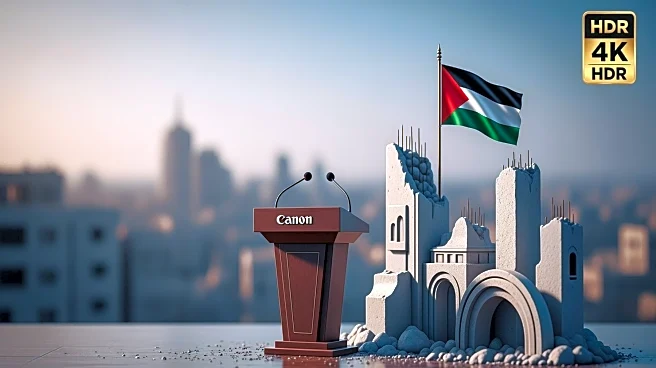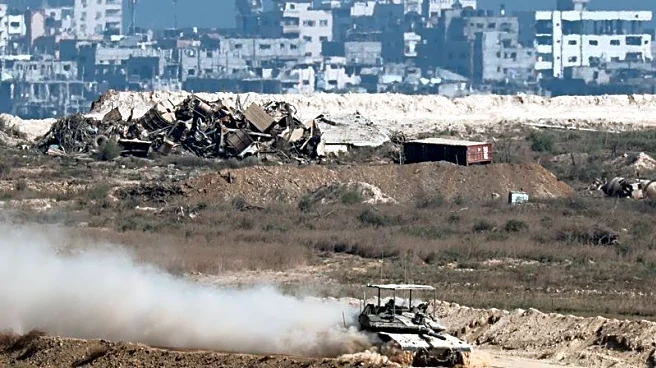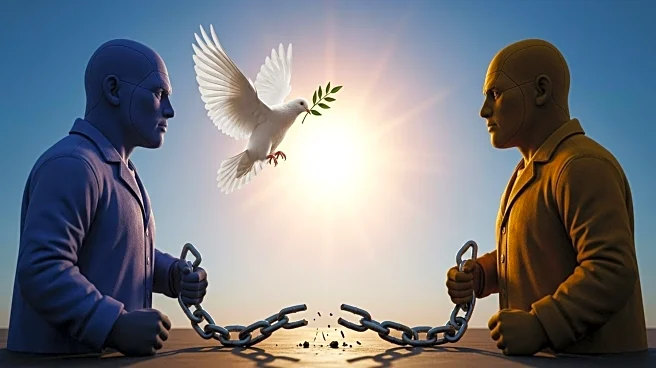What's Happening?
Following a six-month period of intense conflict, a ceasefire has been established in Gaza, allowing residents to begin contemplating the reconstruction of their lives and communities. The conflict, which included Israeli bombardment and an invasion of Gaza City,
displaced hundreds of thousands of Palestinians. Despite the ceasefire, Israel maintains control over significant portions of Gaza, and many areas remain inaccessible. Cultural workers like Leena Majed Yassin, an archaeology graduate, and Majed Shala, an artist, are among those facing the daunting task of rebuilding. Yassin, whose studies were interrupted by the war, hopes to return to her neighborhood and continue her education. Shala, who lost his home and art space, emphasizes the need for reconstruction to restore normalcy. The World Bank estimates significant damage to heritage sites, with recovery costs projected at $192 million.
Why It's Important?
The ceasefire in Gaza presents a critical opportunity for rebuilding, but the challenges are immense. The destruction has not only affected physical infrastructure but also the cultural and social fabric of the community. The rebuilding process is crucial for restoring stability and normalcy, allowing residents to return to their homes, children to resume education, and cultural heritage to be preserved. The involvement of international organizations like the World Bank highlights the global significance of the reconstruction efforts. Successful rebuilding could foster long-term peace and development in the region, but it requires substantial financial resources and international cooperation.
What's Next?
The Palestinian Ministry of Tourism and Antiquities, in collaboration with the World Bank and other partners, is planning heritage reconstruction efforts. Initial steps include updating damage assessments and beginning emergency conservation work. The ministry aims to prioritize significant sites like the Monastery of Saint Hilarion. However, the success of these efforts depends on the stability of the ceasefire and the ability to secure necessary funding and resources. The international community's support will be vital in ensuring that reconstruction efforts are comprehensive and sustainable, addressing both physical and human needs.
Beyond the Headlines
Rebuilding in Gaza extends beyond physical structures; it involves healing the psychological and emotional wounds inflicted by the conflict. The cultural identity and heritage of Gaza are integral to its community's resilience and recovery. Efforts to preserve and restore cultural sites are not only about maintaining history but also about fostering a sense of hope and continuity for future generations. The reconstruction process offers an opportunity to address broader issues of social justice and human rights, potentially influencing peacebuilding efforts in the region.
